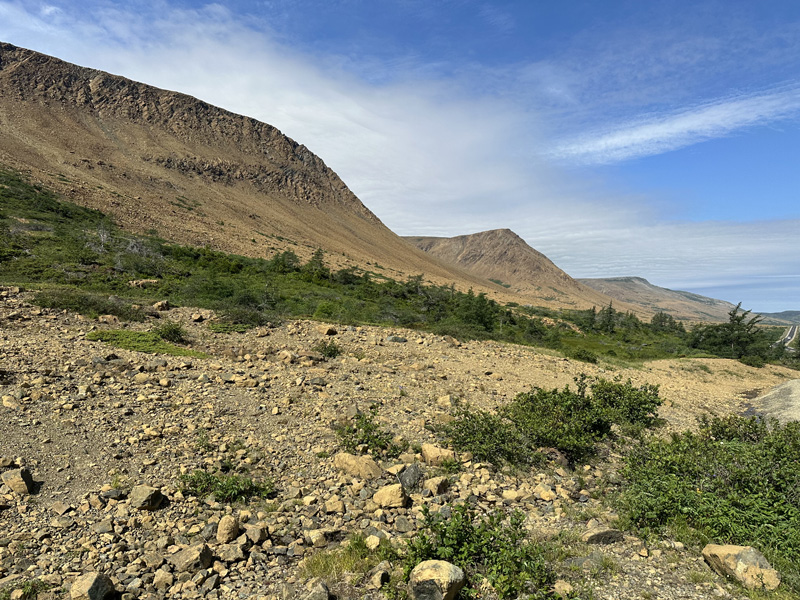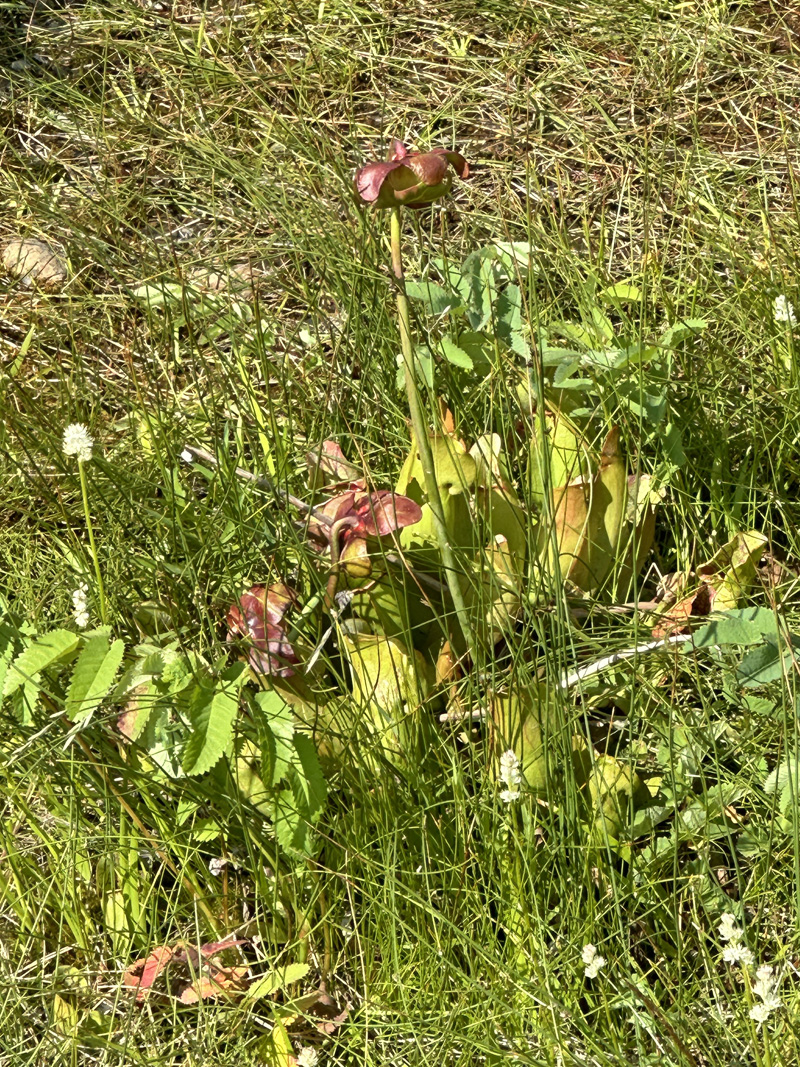Cross Canada Road-Trip: The Tablelands
Exploring the Unique Landscape of The Tablelands
The Tablelands is an otherworldly place of rusting serpentine rock from deep within the earth and cannibalistic plants that eat themselves each autumn so they don’t waste the little nutrients they have. It’s beautiful, unspoiled, and a little bit weird. We arrived at 10 am in time for the guided tour along the Tablelands Trail and spent our time joining the group when it suited and exploring on our own when we were in the mood.
The highway itself is quite a beautiful experience, well-maintained and cutting right through the valley that separates the normal Appalachians on one side from the eerie orange Tablelands on the other. Driving along it, listening to maritime sea shanties and glimpsing the ocean around bends along the way, was our favorite hour or so on our 14,000 km (about 10,000 miles) road trip across Canada and back. Nope, that’s not a typo.

The Tablelands Trail Experience
The Tablelands Trail was great for just about any skill level. Not much elevation and well maintained. It’s made of gravel but isn’t too rocky.
Geological Significance of The Tablelands
The Tablelands are a unique geological wonder, their landscape seemingly barren and inhospitable. Remarkably, the Tablelands is one of the few places on Earth where you can walk on the Earth's mantle. The peridotite rocks, usually found deep beneath the Earth's crust, have been exposed here, offering a rare glimpse into the composition and processes of our planet's interior. This geological anomaly makes the Tablelands a significant site for both geologists and visitors.

The Unforgiving Soil and Its Flora
Peridotite is an igneous rock, originating from the Earth's mantle, thrust to the surface by tectonic activity. This rock is rich in heavy metals like nickel, chromium, and cobalt, which are toxic to most plant life. Consequently, the soil in the Tablelands is poisoned with these metals, creating an environment where almost nothing can grow.
However, the few plants that do manage to survive here are extraordinary examples of adaptation. The carnivorous pitcher plants, for instance, thrive by attracting and digesting insects to obtain the nutrients they can't get from the soil. These plants have evolved to use their modified leaves to trap rainwater and enzymes, creating a deadly pitfall for unsuspecting bugs. Once an insect falls in, it is slowly broken down and absorbed by the plant, providing much-needed nourishment.

Remarkable Survivors
Another remarkable survivor is the so-called "cannibal plant," which recycles its own tissues in the fall. These plants break down their leaves and stems to reabsorb nutrients, conserving energy and surviving in the nutrient-poor soil. This strategy is a stark contrast to most plants, which shed their leaves and allow them to decompose in the soil, enriching it for future growth. In the Tablelands, however, any wasted nutrients could mean the difference between life and death.
Adaptation and Resilience
There are also a few hardy species that have adapted to tolerate the high metal content in the soil. These plants have developed mechanisms to either exclude the metals from their tissues or sequester them in a way that prevents toxicity. This ability to thrive in such a harsh environment makes the Tablelands a fascinating subject for botanists and ecologists. The few plants along the trail exist because it was built on top of a roadbed that earlier settlers constructed using rock from elsewhere. This was long before the area was designated a UNESCO World Heritage Site for its unique geology.
A Humbling Experience
Visiting the Tablelands was a humbling experience, showcasing nature's incredible resilience and adaptability. As we drove out of Gros Morne National Park, I was singing along with gusto to The Wellerman, waving goodbye one last time. I’ll miss Newfoundland’s peculiar charm, taking home nothing but memories and my sea shanty playlist!
Happy hiking,
Leanne

